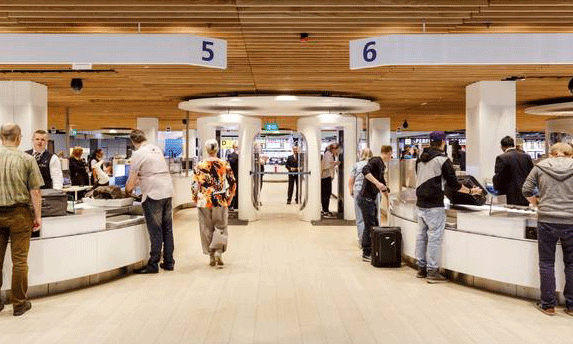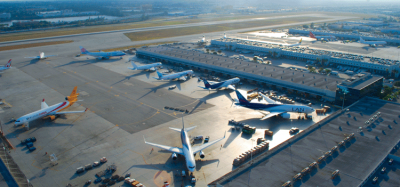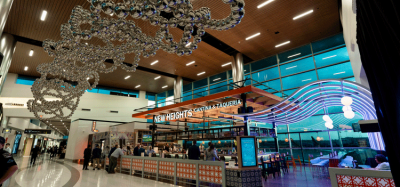Schiphol Airport: Striving towards seamless flow and self-service security
- Like
- Digg
- Del
- Tumblr
- VKontakte
- Buffer
- Love This
- Odnoklassniki
- Meneame
- Blogger
- Amazon
- Yahoo Mail
- Gmail
- AOL
- Newsvine
- HackerNews
- Evernote
- MySpace
- Mail.ru
- Viadeo
- Line
- Comments
- Yummly
- SMS
- Viber
- Telegram
- Subscribe
- Skype
- Facebook Messenger
- Kakao
- LiveJournal
- Yammer
- Edgar
- Fintel
- Mix
- Instapaper
- Copy Link
Posted: 4 October 2019 | Tara Nolan (International Airport Review) | No comments yet
For airports across the globe, providing passengers with a seamless travel experience whilst protecting the airport systems from risks are two of the most important priorities. Here, Wilma van Dijk gives an insight into how Schiphol is working towards securing both.


The ultimate goal for any airport is to make the boarding process as easy and as quick as possible for passengers. Many airports are turning to new technologies that can optimise operations and improve efficiency to achieve this.
At Airport IT & Security 2019, Wilma van Dijk – Director of Safety, Security & Environment at Royal Schiphol Group – gave a presentation on how Schiphol Airport has focused on creating a more enjoyable end-to-end passenger experience. Following this, International Airport Review spoke to her regarding the recent trials of biometric self-boarding systems using facial recognition and CT scanners, to gain an insight into Schiphol’s vision for the future – in terms of both the passenger and the security systems.
Schiphol’s recent trials of technology
Schiphol Airport have implemented the ‘Seamless Flow’ programme; a public-private cooperation in which the government, the airport and airlines are closely working together to explore the best way to secure a painless passenger experience.
The ‘Seamless Flow’ programme aims to create a seamless journey for passengers through all obligatory checks at the airport. Within this programme, there have been several separate pilots on biometric boarding and border passage. Recently, the airport has started a pilot in which passengers test enrolment, border passage and boarding, all using biometrics (facial recognition).
Schiphol has also completed the roll-out of CT scan technology for cabin baggage in all security filters in the non-Schengen area of the airport. This means that passengers can keep both liquids and electronic devices (including laptops) in their bags during security checks. CT-scanners from several manufacturers have been tested and this will continue in order to further improve systems and keep track of the latest developments in the market.
It is planned that complete implementation of CT scanning for cabin baggage in the Schengen security filters will occur in 2020.
Airport IT & Security, International Airport Review’s annual conference, gathers industry leaders from across the globe to discuss hot topics with airport security, including mitigating measures for drones, insider threats, infrastructure breaches and cyber-risks. Register your interest for Airport IT & Security 2020 now!
Economic and environmental concerns
When implementing new technologies, there are of course economic and environmental concerns that have to be considered.
Therefore, business cases at Schiphol always include – among other themes – both economic and environmental elements.
The executive team ensure that all decision-making strikes the right balance between testing new technologies and balancing environmental and economic implications.
The long-term vision for Schiphol’s security checkpoint
The long-term vision at Schiphol Airport is to further improve processes – with a next step being fully automated self-service security for certain travellers. The team therefore focus on constant incremental improvements and new technologies in the security process that improve the passenger flow. This is always subject, of course, to national and international legislation on aviation security.
Combatting future security threats
Schiphol is part of a community of airports, airlines, security providers and relevant government agents. Discussions with our trusted partners help us to be prepared and to pro-actively take necessary security measures.
Aviation security at Schiphol is an eminent example of cooperation between all parties that are involved within the aviation processes. At an airport, aviation security is the result of cooperation between a myriad of partners. Schiphol looks for win-win solutions that not only keep improving aviation security but facilitate the processes of all partners. At Schiphol, a ‘Platform for Security, Border and Public Safety’, whose membership consists of all public and private parties working on security at the airport, has been instituted. The objective of this platform is to promote and create an integrated approach of counterterrorism, public order and safety, crime and border control.
Wilma van Dijk believes “the key to success here is that cooperation between all public and private parties involved takes place based on equality and commitment”.
Biography
Wilma van Dijk, Director of Safety, Security & Environment at Royal Schiphol Group, has been in this role since October 2015 and is responsible for aviation security policy and operations, access control, cyber-security (CISO of Schiphol) and company security. This includes contract management, contacts with (inter)national government agencies, private security companies and technical development companies. She is also responsible for policy on safety and environmental issues and for the airport fire brigade. Next to this, van Dijk is responsible for Seamless Flow, the innovative programme that aims to provide a secure, hassle-free and paperless passage on the airport by using biometrics.
From 2009 to 2015 she occupied several posts within the Ministry of Justice, for example, Deputy National Coordinator for Security and Counterterrorism as well as Director of Cybersecurity.
Related topics
Airport development, Baggage handling, Information technology (IT), New technologies, Passenger experience and seamless travel, Security, Terminal operations


















